Demystifying Agentforce
Building and Managing Autonomous Agents for Salesforce
Agentforce
In our previous blog, we introduced Agentforce, Salesforce’s new solution for building and managing autonomous agents across various business functions like Sales, Service, Marketing, Commerce, and more. In this follow-up, we’ll dive deeper into how Agentforce works and what makes it a powerful addition for businesses of all sizes. Whether you’re a Salesforce pro or new to the platform, we’ll keep things straightforward.
Let’s explore the ins and outs of Agentforce and uncover how it streamlines agent creation and enhances business efficiency without requiring complex code.
Agentforce: The Basics
At its core, Agentforce allows companies to design autonomous agents that can carry out specific tasks within a business. These agents work as virtual team members, handling actions like answering customer queries, providing product information, or even managing back-end tasks like data retrieval. Built within Agent Builder (part of Agentforce Studio), each agent is configured in natural language, making it simple for users of any technical background to describe and deploy tasks.
Think of it as a “describe it, Agentforce does it” approach, where you define tasks for your agents as if you’re speaking to a real person.
Key sections
The Agent Builder interface has four primary sections:
- Left Sidebar – For navigating agent settings.
- Left Panel – Displays the specific settings page you’re working on.
- Right Panel – Allows you to initiate a conversation to test your agent in real-time.
- Middle Panel – Displays the test-drive results of your agent’s responses.
With these intuitive panels, you can easily set up and evaluate your agent’s performance in different scenarios, tweaking settings as you go along.
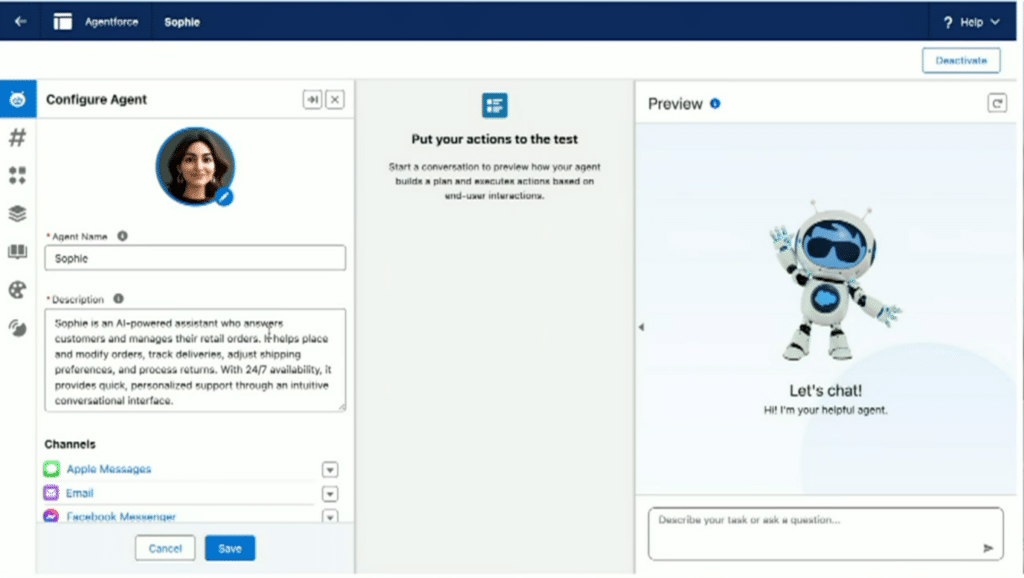
Building Blocks of Agentforce
1. Agent Topics
Each Agentforce agent operates based on topics—the fundamental building blocks that outline an agent’s area of expertise. Topics define what an agent can “talk about” and what it has access to. For example, a Sales Agent could have topics like Product Information, Order History, and Customer Preferences. These topics ensure that the agent only interacts with relevant data, creating a tailored experience for users.
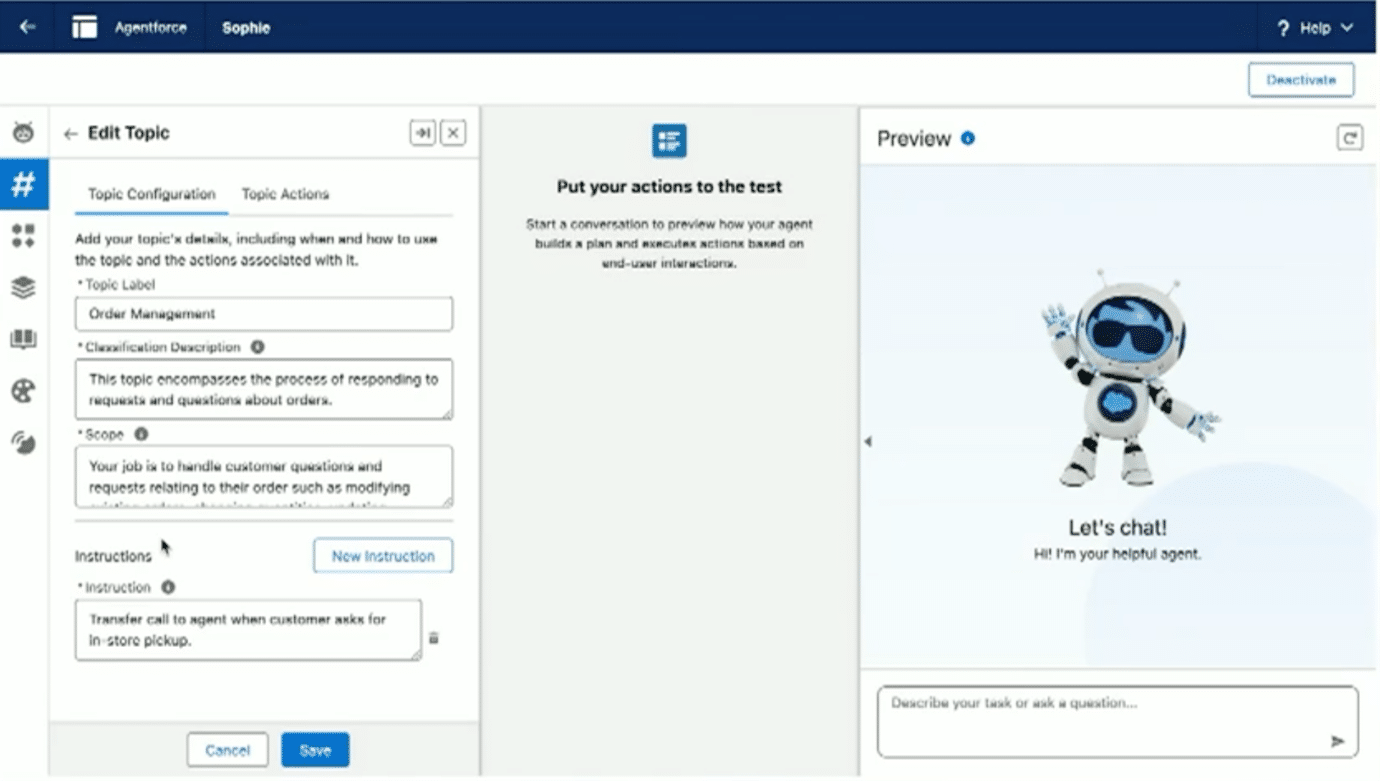
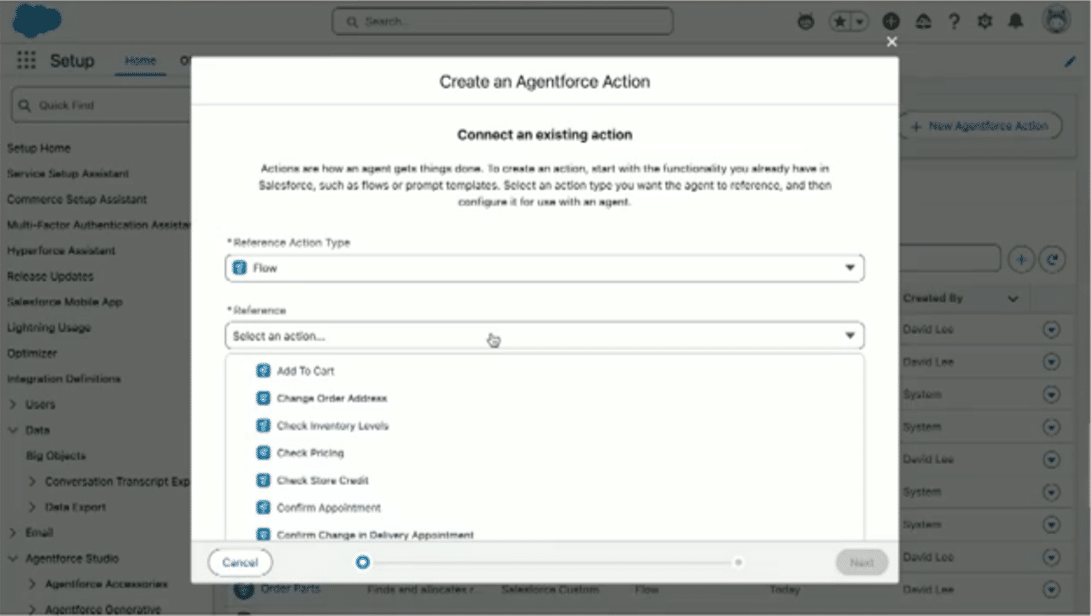
2. Topic Actions
Alongside topics, actions are the functional capabilities of an agent—what it can actually do with the topics. Actions are typically based on Salesforce flows or connected services like MuleSoft APIs. For instance, if your agent needs to fetch customer order details, an action could be set to trigger this retrieval.
Here’s how actions come into play:
- Viewing Existing Actions: Actions assigned to topics can be viewed and managed within the Agentforce Actions in the Salesforce setup.
- Creating New Actions: You can define new actions by choosing from Apex, Flow, Prompt, or MuleSoft API, depending on the task’s needs. Once selected, you can edit inputs and outputs, enabling precise control over how the agent interacts with data.
3. Atlas Reasoning Engine (Testing and Validating)
Salesforce’s Atlas Reasoning Engine steps in as the backbone of testing for Agentforce, showing a step-by-step reasoning process of the agent’s responses. Here’s how it helps ensure accuracy and context:
- Identify Relevant Topics: Atlas determines if the query falls under the agent’s assigned topics.
- Action Execution: The engine follows through with actions such as querying databases.
- Confirm Response Validity: Finally, it verifies if the response aligns with Salesforce’s grounding standards (accuracy and relevancy).
This robust validation process is especially helpful before you launch your agent into a live environment.
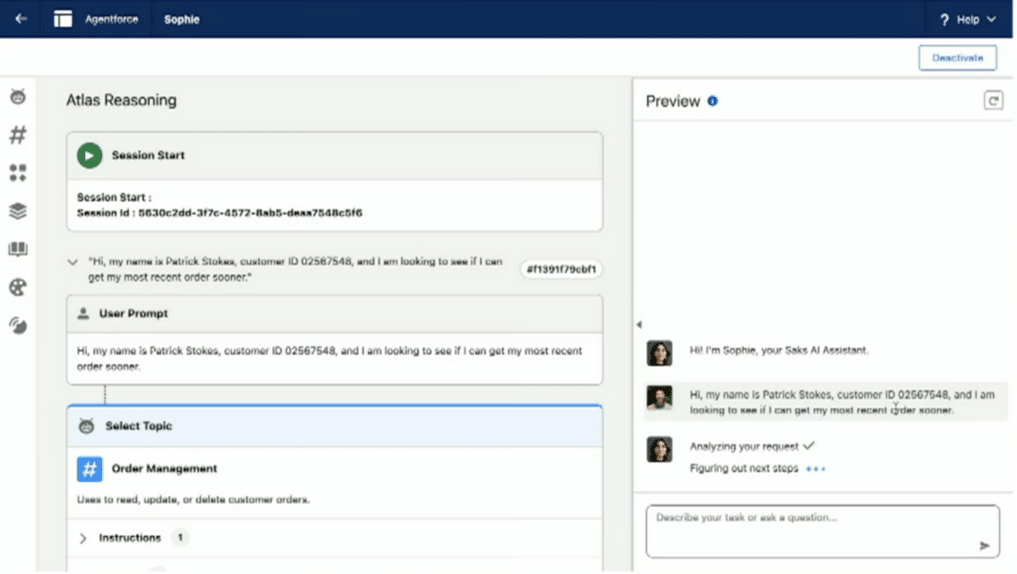
How Agentforce Integrates with Salesforce Data Cloud
Data is the fuel that powers Agentforce agents, whether it’s structured (Salesforce records) or unstructured (emails, voice memos). Salesforce Data Cloud acts as the foundation, enabling agents to access and leverage data from across Salesforce’s ecosystem seamlessly. This data exchange means that Agentforce can provide highly contextual responses by pulling from varied sources.
Ways to integrate external data into Agentforce:
- Data Cloud Ingestion: Set up a scheduled import of external data into the Data Cloud.
- Zero-copy Integration: This feature allows external data to be accessed without physically importing it.
- MuleSoft APIs: Use API connections for real-time data pulls.
Example Use Case
Let’s say you want your agent to fetch details from an order management system like Snowflake. Through Salesforce’s built-in connector, you can link this system to your agent’s Data Cloud, enabling the agent to access customer order data in real time.
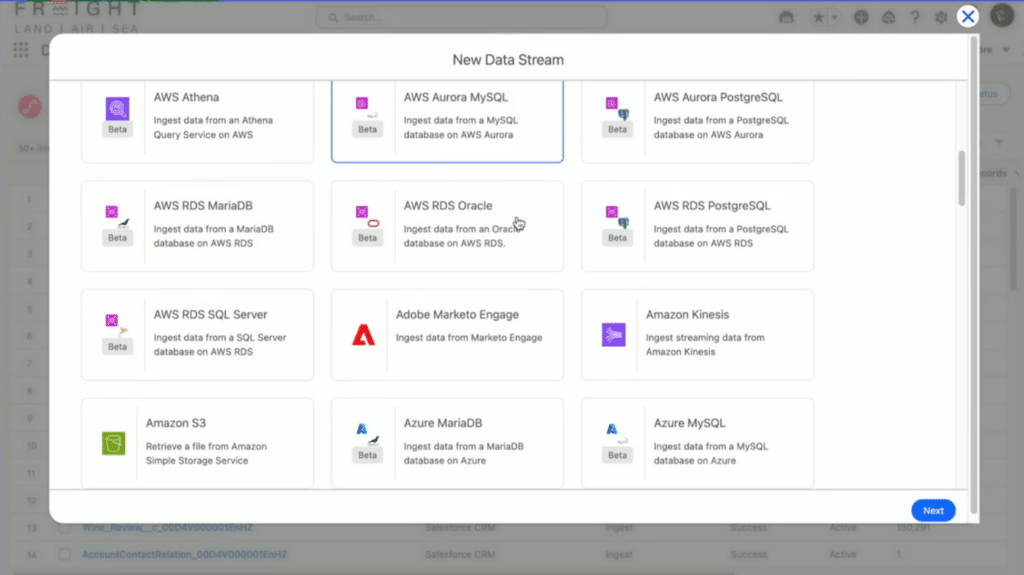
Why Agentforce Matters
For Salesforce Specialists: Agentforce is a powerful new tool, enabling teams to create highly functional agents that operate independently and enhance productivity. It allows for easy scaling across departments and simplifies agent management.
For Businesses: With declarative “clicks-not-code” capabilities, businesses can leverage automation without extensive coding. It’s especially useful for customer-facing roles, freeing up teams to focus on more complex customer interactions while agents handle routine inquiries.
For Non-Technical Users: Agentforce’s natural language-based configuration means users don’t need a deep technical background. If you can describe a task, Agentforce can likely be configured to handle it.
Ready to Build with Agentforce?
Agentforce is revolutionizing how businesses think about automation within Salesforce. Whether you’re considering it for sales, customer support, or back-end operations, it offers a dynamic way to scale and simplify tasks. Embrace the future of work with Agentforce and discover how this tool can transform your organization, one automated task at a time.
Stay tuned for more insights and a deeper dive into other Salesforce innovations, and as always, feel free to reach out to us at 2ManyDigits for guidance on your Salesforce journey!
